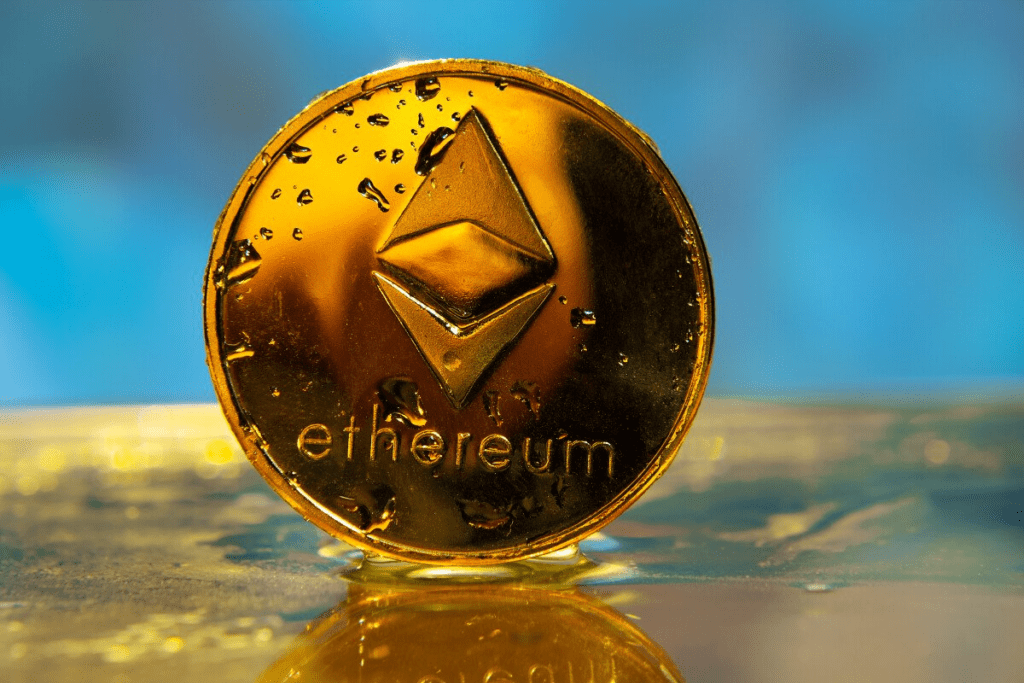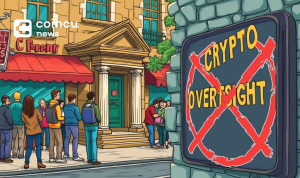A Look Back At Ethereum’s Working Mechanism Before The Important Shapella Upgrade
Key Points:
- Shapella is a notable upgrade of Ethereum.
- Users can withdraw ETH from the Beacon Chain after the update.
- The Shapella upgrade is a stepping stone event towards The Surge, a major update targeted at improving the Ethereum network.
The Shapella network upgrade will be activated on the Ethereum mainnet on April 12 after reaching an official consensus with the main developers.
Shapella is an important update that allows ETH to be withdrawn from the Beacon Chain network. In addition, this is also a premise for Ethereum to go to more advanced improvements later.
However, before that, Ethereum completed the upgrade of The Merge. To learn more about how Ethereum works over time, read this Coincu article.

What are Epochs and Slots?
An epoch in the realm of artificial neural networks is one loop of the whole training dataset. A neural network is generally trained over several epochs. Simply said, if we feed a neural network training data in a variety of patterns throughout several epochs, we may anticipate increased generalization when we feed it new unseen data.
The basic parameters of the model in the dataset are altered with each epoch. As a consequence, each batch of the epoch is named after the batch gradient descent learning process. The batch size is normally 1 or more, and the epoch number is always an integer value. It may also be expressed as a for-loop with a fixed number of loops, with each loop path spanning the whole training dataset.
An epoch is a defined span of time inside the Ethereum network.
Each epoch has 32 slots, and each validator is allotted one slot each epoch. A slot is a 12-second period of time during which validators may participate in the proof-of-stake protocol by proposing or voting on new beacon blocks.
An epoch is the amount of time it takes to complete 30,000 blocks on the chain. The duration of an epoch is controlled by the rate at which transactions are processed and agreements are achieved; however, the rate stays relatively consistent at about 100 hours.
This time span is used to describe when particular events in a blockchain network will take place, such as when incentives will be given or when a new set of validators will be allocated to verify transactions. Each blockchain protocol defines that time period differently. It is often referred to as the time it takes to finish a given number of blocks on the chain.
Epochs are used to aggregate slots, and slots and epochs serve as a timetable for validators to participate in the proof-of-stake protocol:
- A cycle with 32 slots is known as an epoch.
- A validator committee completes a work in a 12-second slot.
- A whole round of the proof-of-stake protocol is represented by an epoch, and a slot permits a validator to participate in the round. All active validators get a chance to participate at the conclusion of each era.
A validator is allocated to precisely one slot in an epoch, and all validators are dispersed equally among the slots to create a committee.
A slot contains two roles:
- A validator has the option of presenting a block to committee members.
- Attester Each remaining committee member votes on a block that they feel should be the next blockchain leader.
- Each epoch has 32 block proposers (one for each slot), and all validators may participate in the proof-of-stake protocol by voting for the chain leader they feel should be the canonical beacon chain.

What are Sharding and Beacon Chain?
The technique of breaking a blockchain into many blockchains, known as shards, is known as sharding. It improves network efficiency so that a validator does not have to manage the burden alone. At this stage, each validator simply has to keep track of information about their shard. These validators are also swapped across shards on a regular basis to prevent manipulation. The Beacon Chain is used to communicate and coordinate shards.
How it works
Validators are the most crucial feature of Ethereum 2.0 since they are entirely in charge of its infrastructure and upkeep. Each validator will have two keys: one for signing and one for withdrawal. A signature key is utilized in it to do blockchain activities. Validator has three primary functions, which are as follows:
- Make a proposal for and add blocks to the Beacon Chain or one of the Shard chains.
- To authenticate the Beacon and Shard chains.
- To report other validators’ harmful activity.
For these reasons, signing keys must be available 24 hours a day, seven days a week. The withdrawal key, on the other hand, is used for more monetary purposes. It is set by default to not need constant internet availability, similar to a signature key. Nonetheless, it must be guarded since the individual has complete control over all monies.
In order to become a validator, you must first deposit 32 ETH in the beacon chain. Nonetheless, do not expect validators to be able to act individually or unilaterally; they mostly work in committees. This location has groups of at least 128 validators who work and vote for the blockchain’s leader.
A checkpoint is the most recent block in an epoch’s initial slot, and an epoch will contain a total of 32 slots. If two or three validators agree on the most recent checkpoint, it will be passed. When the preceding checkpoint is approved, the last block will be finished. As a result, a block is finished every two epochs.
What happens in the Shapella upgrade?
Proposals to develop new features or processes on the Ethereum network are known as Ethereum Improvement Proposals (EIPs). The Shapella upgrade is another name for EIP-4895 and other EIPs in this upgrade, including:
- EIP-4895: Beacon chain pushes withdrawals as operations. Validators may withdraw staked ETH from the Beacon Chain. There are two methods for withdrawing ETH:
- Partial Withdrawal: This enables you to withdraw earnings earned from ETH staking to your wallet. The initial 32 ETH will be kept, and the validator will remain a part of the Beacon Chain.
- Allows withdrawal of all 32 ETH of original staking and payout.
- EIP-3860: Limit and Meter Initcode – Set the maximum initcode size to 49152 and add 2 gas per 32-byte initcode. This contributes to resolving the issue of Ethereum’s gas depletion.
- EIP-3855: PUSH0 Instruction – aids in the reduction and optimization of smart contract (smart contract) size.
- EIP-3651: Warm COINBASE – aids in the reduction of gas prices for network designers. (This Warm COINBASE has nothing to do with the Coinbase exchange.)
- Deprecate SELFDESTRUCT in EIP-6049.

Shapella effect
For users
Before the Shapella update, Ethereum users had two options for participating in staking:
- Option 1: Stake at least 32 ETH to become an Ethereum network validator. Nevertheless, not everyone possesses the necessary 32 ETH. All ETH staking assets will be frozen.
- Option 2: Employ protocols from the Liquid Staking Derivates (LSDs) group, such as Stakewise, Lido, and Rocket Pool. The user binds ETH (no requirement for 32 ETH) to the protocol and receives stETH, rETH, etc. These are synthetic assets derived from the original ETH in the Derivatives array. Users may utilize them to engage in additional DeFi activities given by the protocol, such as lending, yield farming, and serving as collateral, among others.
The second method liberates consumers’ liquidity. Yet, they are just assets produced from the amount of Ethereum staked. They are also confined to the protocols that enable these characteristics.
Instead of only depositing and staking, users may withdraw their ETH (mainnet) from the Beacon Chain network. This enables customers to be more active (deposits) in the management of financial assets. This is a chance for new users to stake their Ethereum.
Following the end users, Staking as a Service group ventures specialized in the provision of LSDs will profit. Those who previously questioned why they should not invest in ETH are now new prospective consumers for these LSDs projects. This is also the cause for the price increases of the following tokens: LDO, RPL, SD, FIS, etc.
For developers
The Shapella upgrade is a stepping stone event towards The Surge, a major update targeted at improving the Ethereum network’s TPS transaction speed. Gas rates will be decreased, which will assist developers.
For ETH market
A portion of the freed ETH will put pressure on the spot market. Yet, it also helps ETH liquidity improve in comparison to before the update.
DISCLAIMER: The Information on this website is provided as general market commentary and does not constitute investment advice. We encourage you to do your own research before investing.
Join us to keep track of news: https://linktr.ee/coincu
Harold
Coincu News























